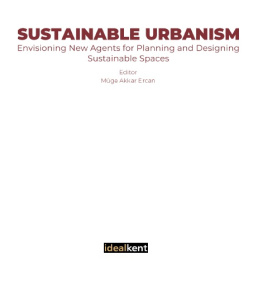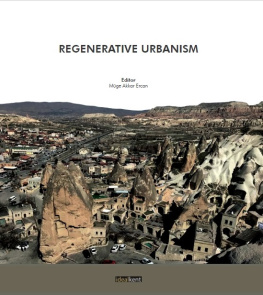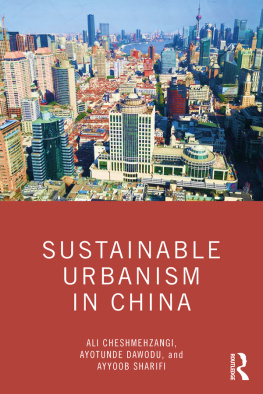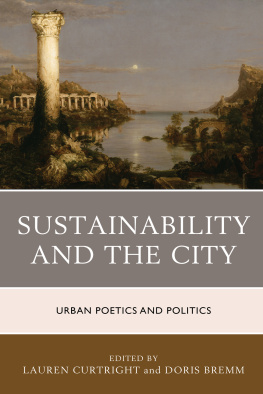3.1.BIOPHILIA AS A REGENERATIVE AGENT

3.1.1. From Biophilic Design to Biophilic Urbanism
The study of Biophilia is based on "ecology" which addresses preserving and protecting nature "as it is"; while from planning and design perspective, biophilic design and urbanism is really about "integration" or sometimes "manipulation" of those natural elements or systems to create sense of "life" in buildings and cities (Alexander, 2002). Biophilic Urbanism focuses on biophilic urban management and programmes, which incorporates the concept of work-live-play into mixed land use, enhanced public and slow traffic system into transportation connectivity, and adapted occupant engagement for the green space place-making.
Biophilia Management:
the quality of the elements,
how natural landscapes require minimal management,
the availability of permeable surfaces for stormwater management,
the use of natural ventilation and airflow,
the presence of daylight and shadow design.
3.2. CONTEXT: BIOPHILIA IN GREME
Site Definition ; In Greme, the symbiotic relation of man and nature is clearly visible in terms of the way people settled down in such a different landscape and conditions. Because of Cappadocia Region's geomor-phology and topology, people preferred to carve the rocks or dig the soil to build their cities, ending up with different types of relations between nature. Biophilia can be an agent in order to analyze and design codes for the quality of space since it has a direct relation between the well-being of people.
3.2.1.a. Objective of Identity
The natural environment, which consists of the fairy chimneys, valleys and their direct surroundings, is nowadays mostly seen as a tool for tourist attraction. This makes this environment an unattractive place for inhabitants and they prefer tourism instead of agriculture, they sell their houses in the core of Greme to turn them into hotels, and this point of view makes them turn their back to the nature.
The characteristics of the natural- and built environment, which together form the site identity. The objective to deal with the identities of these sites' is to bring the people back to nature remembering its importance by limiting uncontrolled activities, and turning back to agriculture in valleys, experiencing its natural atmosphere.

3.2.1.b. Site Analysis

Natural characteristics of Greme and its surrounding is analyzed in macro scale. The region consists of many valleys and natural forms. Valleys reach the city from the south part of Greme, functioning as thresholds. They create a boundary and a transition area on the periphery of the southern part of Greme. Aricultural lands are mainly located in the valleys and in the sites which surround the main highway roads; i.e.the lands along the road Avanos and Greme, and the lands along the road Uhisar and Greme. The city centercan be seen as a transition area, since the main artery road passes through the city, which comes from Uhisar and goes to the direction of rgp, near the Open Air Museum. There are several damaged areas can be seen from the air photograph, agricultural lands are flattened and damaged in order to function as a take-off point for hot air-balloons. On the other hand, ATV's are creating uncontrolled patterned roads in the area damaging the natural pattern in the valleys. Those harsh damage to the natural environment comes as a result of mass tourism.
3.2.1.c. Flora and Fauna of the Region


Natural characteristics of Greme should be preserved and it does not consist of only the relation between human and built environment, it also consists of the species that exist and live in the region from the plant to animals, and their relation between humans.
Region has its own specific and endemic species. The colors of purple and yellow are dominant in the region besides its brown color palllete.
From the research, it is concluded that Crocus ancyrensis, Crocus danfordiae, Colchicum triphyllum (yellow and blue crocus species), lumpy geophytes, which herald spring, such as Iris galatica (irises), are extremely weak in the area. It is important to cultivate them as ornamental plants, to plant them in the gardens and to reproduce them, both for the continuation of their lives and for making the region more beautiful. (Vural, Ko, opurolu & Umut, n.d.)
3.2.1.d. Section Analysis




3.2.2. Problem Statement
Since the beginning of the 1990s, there has been a high touristic interest which has changed its natural dynamics of the settlement. Although people preferred to live in caves for centuries because of the climate and security issues, today these spaces have changed their function by transforming into hotels. Mass tourism brings some side effects which change the relation between human and nature there. It is important to understand how mass tourism affects the quality of space and existing natural relations.
Today, the Cappadocia region is visited by nearly three million tourists a year who flock to the region only during two months, July and August. Thus, the negative pulsar effects of this tourist flow in Cappadocia are immense and jeopardize the integrity of the natural and historical values of the region.There, it is asked that:
How can we negotiate human nature relationships considering the potential of tourism in Greme?
How nature and urbanism coexist together?
3.2.3. The Scales
Throughout the whole process of this project; we will work within different scales: from the scale of XXL, to the scale of XS, i.e.the smallest unit. With the constant reflection of scales, interrelations between causes and effects can be made visible in a complex way and this allowesus to define srategies with a multi-scalar approach.
XXL - Region
XL - Urban
L- District
M- Street
S- Block
XS-Plot

3.3. VISION
3.3.1. The Approach
The main idea of the vision is based on objectives to face nature, and also to use it as a spine and achieve thereby bringing nature back to the people, and the people back to the street.


















